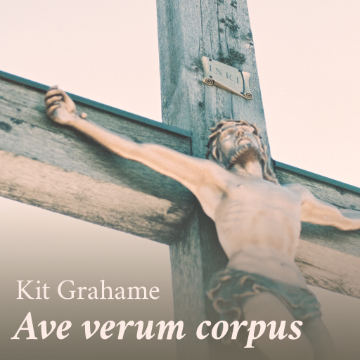Kit Grahame
Composer and Arranger
Ave verum corpus
for SATB a cappella with divisi

Details
- Theme
- Sacred
- Setting
- SATB a cappella with divisi
- Composed
- Canberra, 2003
- Source of text
- 14th-century Eucharistic hymn
- Language
- Latin
- Downloads
- Preview score
Please contact me if you are interested in this score
About the text
Ave verum corpus is a short Eucharistic hymn that has been set to music by various composers. It dates from the 14th century and has been attributed to Popes Innocent III, Innocent IV and Innocent VI. During the Middle Ages it was sung at the elevation of the host during the consecration. It was also used frequently during Benediction of the Blessed Sacrament.
The hymn’s title means “Hail, true body”, and is based on a poem deriving from a 14th-century manuscript from the Abbey of Reichenau, Lake Constance. The poem is a meditation on the Catholic belief in Jesus’s Real Presence in the sacrament of the Eucharist, and ties it to the Catholic conception of the redemptive meaning of suffering in the life of all believers.
Text from Wikipedia.
Latin text
Ave verum corpus, natum
de Maria Virgine,
vere passum, immolatum
in cruce pro homine,
cuius latus perforatum
unda fluxit sanguine:
esto nobis prægustatum
in mortis examine.
O dulcis, O pie, Iesu, fili Mariæ.
Miserere mei. Amen.
English translation
Hail, true Body, born
of the Virgin Mary,
who having truly suffered, was sacrificed
on the cross for mankind,
whose pierced side
flowed with water and blood:
May it be for us a foretaste
in the trial of death.
Oh sweet, merciful Jesus, son of Mary,
have mercy on me. Amen.